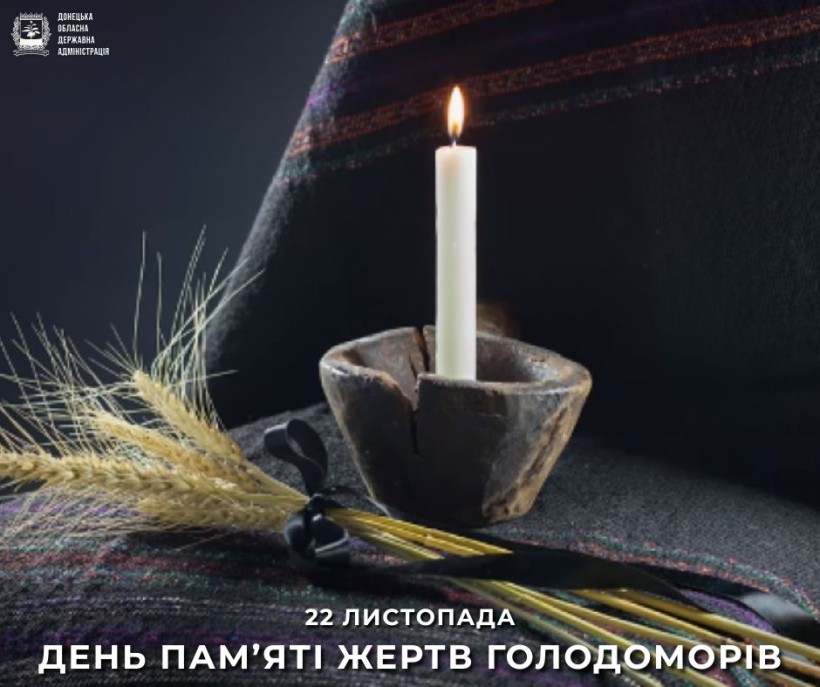
Every year on the fourth Saturday of November, Ukraine commemorates the victims of the Holodomor of 1932–1933 and the mass artificial famines of 1921–1923 and 1946–1947. In 2025, this memorable date falls on November 22.
After the October Revolution, between 1917 and 1921, communists seized power over most of the former Russian Empire. Through direct occupation, they destroyed the democratic Ukrainian People's Republic, proclaimed in 1917.
The Ukrainian nation, which was the second largest in the USSR, had a huge cultural and historical heritage, its own glorious traditions of statehood, and experience in the national liberation struggle. Broad circles of intellectuals and the economically independent peasantry did not accept the policies of the communist leadership. Therefore, the goal was set to destroy Ukrainians as a political nation that could raise the question of creating an independent state. To achieve this goal, a horrific tool was chosen: murder by starvation.
In January 1928, the regime introduced forced grain requisitions. The state forcibly took most or all of the grain grown by farmers at significantly reduced prices. At the same time, the "liquidation" of the wealthiest farms began. In 1930, collectivization sparked mass protests and uprisings. Over the course of the year, more than 4,000 mass protests took place in Ukraine, involving more than a million peasants.
However, despite this, by October 1931, 68% of peasant farms and 72% of arable land had been collectivized, i.e., effectively nationalized. In total, more than 352,000 farms were "dekulakized" in Ukraine. This, combined with inefficient collective farming, resulted in a famine that killed several hundred thousand Ukrainians in the spring of 1932.
Nevertheless, Ukraine remained a center of resistance to the totalitarian regime. In the first seven months of 1932, Ukraine accounted for 56% of all anti-government protests in the Soviet Union.
In the summer of 1932, due to growing resistance, Stalin and his entourage decided to organize an artificial famine in Ukraine so as not to "lose Ukraine." By destroying part of the population.
During the famine, the totalitarian regime not only did not stop the forced confiscation of food, but also rejected aid from abroad and threw all its forces into isolating the starving regions. The army and NKVD troops surrounded Ukrainian cities and railway stations because peasants were trying to escape starvation by fleeing. Villagers were forbidden to leave for other regions of the USSR. Bread was confiscated and sold to other countries for currency, which was used to purchase machine tools and other equipment for industrial enterprises.
It was during this period of less than a calendar year (1932–1933) that millions of people died in Ukraine. Unfortunately, the horrific circumstances of the crime and the deliberate prohibition of mortality statistics make it impossible to establish the exact number of innocent people who died and to compile a comprehensive list of victims by name.
The horror of the Holodomor was the extremely high mortality rate among children. In many regions of Ukraine in September 1933, about two-thirds of schoolchildren did not attend school. According to scientists, the most affected were the forest-steppe regions of Ukraine with long-standing Cossack traditions – Poltava, Cherkasy, Kirovohrad, and Kyiv regions. In some areas of these regions, more than half of the population died in 1933. The mortality rate exceeded the average by 8–9 times or more. In the present-day Vinnytsia, Odesa, and Dnipropetrovsk regions, the mortality rate was 5–6 times higher, and in the Donetsk and Luhansk regions, it was 3–4 times higher.
The famine disrupted the natural genetic pool for decades and led to moral and psychological changes in the consciousness of the nation. The crime of genocide also resulted in the destruction of the traditional Ukrainian way of life. The year 1933 was a time of national catastrophe for Ukraine, the consequences of which are still felt today.
Today, Russians are again using methods of genocide against Ukrainians to destroy our identity, culture, and language. Therefore, the current Russian-Ukrainian war is aimed not only at destroying the independence of the Ukrainian state, but also at exterminating Ukrainians as a distinct people, as a nation.
The components of the Russian Federation's genocidal policy against Ukraine today include terror, mass killings, deliberate attacks on shelters, evacuation routes, and humanitarian corridors, bombing of residential areas, sexual violence, military sieges, and deportations (forced displacement of Ukrainians, including children).
Today, the democratic world expresses its support for our state. The security and defense forces of Ukraine are heroically resisting the enemy. And each of us, remembering the crimes of the communist totalitarian regime, must direct all our efforts to support our defenders.
We urge everyone to remember today, during the nationwide minute of silence at 4 p.m., the millions of lives that Ukraine lost due to the Holodomor and mass artificial famines. We also ask you to light candles of remembrance on your windowsills at dusk – in your homes, offices – wherever you are. Every light in the window is a sign of our grief, memory, and faith in the future.
Based on materials from the Ukrainian Institute of National Remembrance